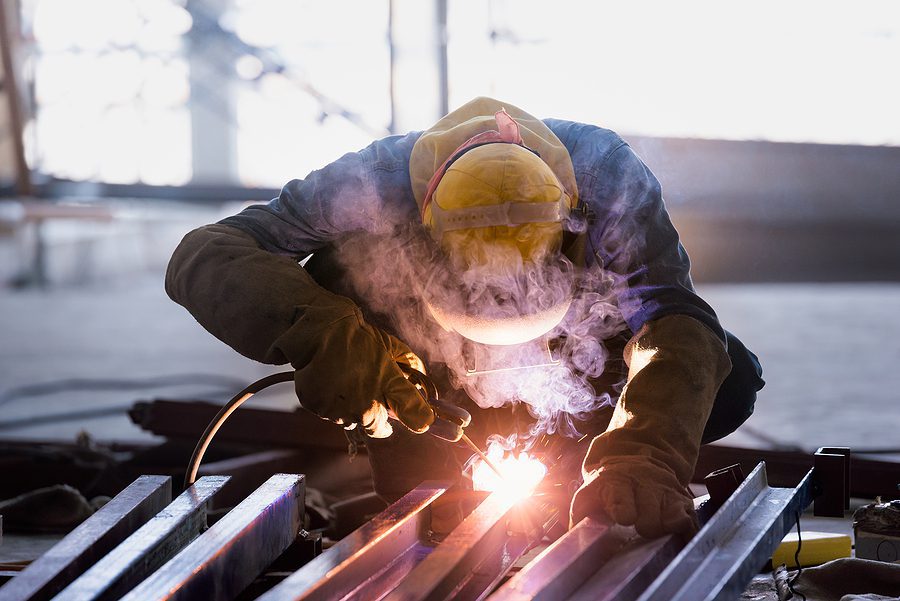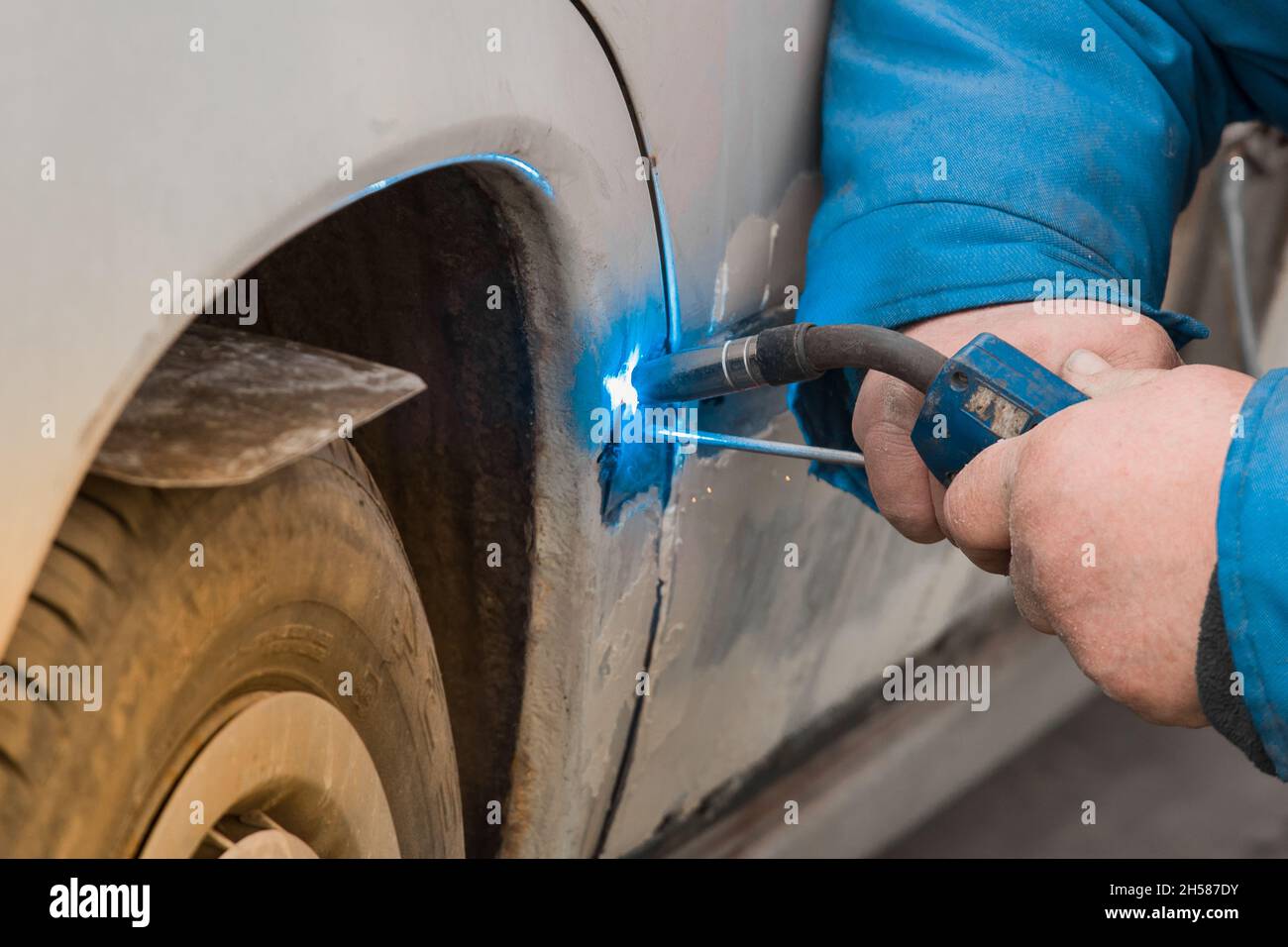All Regarding Welding: Secret Insights Into Techniques and Best Practices for Success
Welding encompasses a range of strategies, each fit for specific products and applications. Comprehending these techniques, such as GMAW, SMAW, and TIG, is essential for accomplishing suitable results. Furthermore, the best equipment and safety techniques can not be ignored. As prep work and fixing play critical roles in the welding procedure, mastering these components can greatly improve the high quality of the end product. What are the crucial factors that guarantee a successful weld?
Understanding Various Welding Strategies
Welding strategies incorporate a variety of approaches, each suited to particular applications and products. Amongst one of the most usual strategies are Gas Metal Arc Welding (GMAW), Secured Steel Arc Welding (SMAW), and Tungsten Inert Gas Welding (TIG) GMAW, additionally referred to as MIG welding, is prominent for its speed and adaptability, making it optimal for thin products. SMAW, or stick welding, is preferred for its simplicity and performance in exterior environments, especially with thicker steels. TIG welding offers accuracy and control, making it appropriate for elaborate job and non-ferrous steels (Fabrication). Each strategy has its distinct benefits and considerations, allowing welders to select the very best technique based upon the job's requirements, material kind, and desired end results. Comprehending these strategies is crucial for successful welding
Important Welding Devices and Tools
While various welding strategies require specific skills, the appropriate devices and devices are just as crucial for accomplishing quality results. Vital welding tools consists of welding makers, which vary relying on the strategy-- such as MIG, TIG, or stick welding. Protective equipment, including safety helmets, gloves, and aprons, assurances safety and security and comfort throughout the process. In addition, clamps and components aid secure products in position, guaranteeing precision in welds. Consumables like welding poles, wire, and protecting gas are also important parts that influence the quality of the weld. Tools such as cutters and mills facilitate surface area preparation and post-weld ending up, contributing to a professional result. Spending in top notch tools eventually enhances the efficiency and performance of welding projects.
Safety Practices in Welding
Proper safety practices are necessary in the welding industry to safeguard employees from potential risks. Welders should use ideal individual protective equipment (PPE), including safety helmets with appropriate shading, handwear covers, and flame-resistant apparel. Appropriate ventilation is important to reduce exposure to unsafe fumes and gases produced during the welding process. Additionally, workers should be educated in the right handling of welding equipment to stop crashes. Fire precaution, such as maintaining combustible products far from the welding location and having fire extinguishers easily available, are necessary. Routine inspections of equipment and work spaces can help determine potential threats before they result in crashes. By sticking to these safety and security techniques, welders can produce a safer working atmosphere and reduce dangers connected with their profession.
Preparing Materials for Welding
Preparing materials for welding is a vital step that greatly affects the top quality and honesty of the end product (Belgrade Welding). Proper preparation involves cleaning up the surfaces to eliminate pollutants such as corrosion, oil, and dirt, which can jeopardize the weld. Methods such as grinding, sanding, or making use of solvents are typically used to accomplish a tidy surface area. Additionally, ensuring that the products fit with each other comfortably is necessary; spaces can cause weak welds. It's additionally crucial to take into consideration the placement and positioning of the components, as this will certainly impact the simplicity of welding and the last end result. Finally, picking the appropriate filler product and making certain compatibility with the base steels is crucial for accomplishing solid, sturdy welds
Tips for Getting High-Quality Welds
Achieving top quality welds requires attention to detail and adherence to best practices throughout the welding procedure. Appropriate joint preparation is crucial, ensuring surface areas are tidy and free from impurities. Picking the proper filler product and welding strategy based on the base steels is important for ideal bonding. Maintaining consistent traveling speed and angle while welding can promote and stop flaws harmony. Furthermore, regulating warmth input is vital; too much warm can lead to bending and compromised joints. On a regular basis examining the welds throughout the procedure enables for prompt modifications if required. Employing proper post-weld therapies, such as cleaning and stress and anxiety relief, can boost the sturdiness and honesty of the weld, ultimately making sure a successful end result.
Fixing Usual Welding Issues
Welding often presents obstacles that can impact the quality and stability of the last item. Common issues such as porosity, irregular weld beads, and overheating can develop, each calling for specific repairing strategies. Recognizing these troubles is essential for welders to improve their skills and achieve suitable results.
Porosity Issues Described
Porosity can usually be forgotten, it stays flux core mig welder an essential issue in welding that can endanger the stability of an ended up product. Porosity describes the visibility of small gas pockets within the weld bead, which can lead and deteriorate the joint to early failure. This problem usually emerges from contaminants, wetness, or inappropriate securing gas insurance coverage throughout the welding procedure. To reduce porosity, welders should confirm that the base products are clean and dry, make use of proper shielding gases, and maintain consistent welding parameters. Frequently inspecting the devices and setting can also help recognize possible concerns prior to they manifest in the weld. Attending to porosity effectively is vital for attaining strong, long lasting welds that meet quality requirements.

Inconsistent Weld Beans
Inconsistent weld beads can greatly impact the quality and toughness of a completed item. Different elements contribute to this issue, including improper traveling rate, inaccurate amperage settings, and irregular electrode angles. When the welder moves also rapidly, a grain might appear narrow and lack penetration, while relocating too slowly can cause extreme accumulation. Additionally, using the incorrect amperage can result in either damaging or excessive spatter, both of which compromise weld stability. The welder's technique, such as irregular torch activity, can likewise result in uneven bead appearance. To alleviate these problems, welders ought to concentrate on preserving stable, controlled activities and making sure correct tools setups to attain harmony in their welds. Uniformity is key to achieving strong and trusted welds.
Getting Too Hot and Bending Issues
Too much warmth throughout the welding process can lead to substantial overheating and warping issues, affecting the architectural integrity of the workpiece. These issues frequently manifest as distortion, which can endanger alignment and fit-up, making additional assembly challenging. Elements adding to overheating consist of the choice of welding specifications, such as voltage and travel rate, in addition to the kind of material being welded. To alleviate these problems, welders ought to preserve regular traveling speed and proper warmth input while checking the workpiece temperature. In addition, pre-heating or post-weld heat treatment can assist minimize stresses brought on by rapid cooling - Belgrade. Regular inspection and adherence to finest methods are necessary in preventing getting too hot and ensuring the long life and reliability of hot plate welding welded structures
Often Asked Inquiries
What Are the Profession Opportunities in the Welding Sector?
The welding market offers varied job chances, consisting of placements as welders, instructors, designers, and assessors. Experts can function in manufacturing, building, aerospace, and automotive fields, taking advantage of solid need and affordable incomes in different duties.
Exactly How Can I Enhance My Welding Rate Without Giving Up High Quality?
To enhance welding rate without giving up quality, one must exercise effective methods, preserve equipment, optimize settings, and enhance hand-eye coordination. Routine training and seeking feedback can additionally greatly add to achieving much faster, high-quality welds.
What Qualifications Are Available for Welders?
Numerous accreditations exist for welders, consisting of those from the American Welding Culture (AWS), the National Facility for Building And Construction Education and Research (NCCER), and different industry-specific organizations. These credentials improve employability and show ability proficiency.
How Does Welding Impact the Features of Metals?
Welding influences the homes of metals by changing their microstructure, which can bring about adjustments in strength, ductility, and solidity. Heat input and air conditioning prices throughout the process view website greatly influence these product attributes.
Can I Weld Dissimilar Metals With Each Other?
